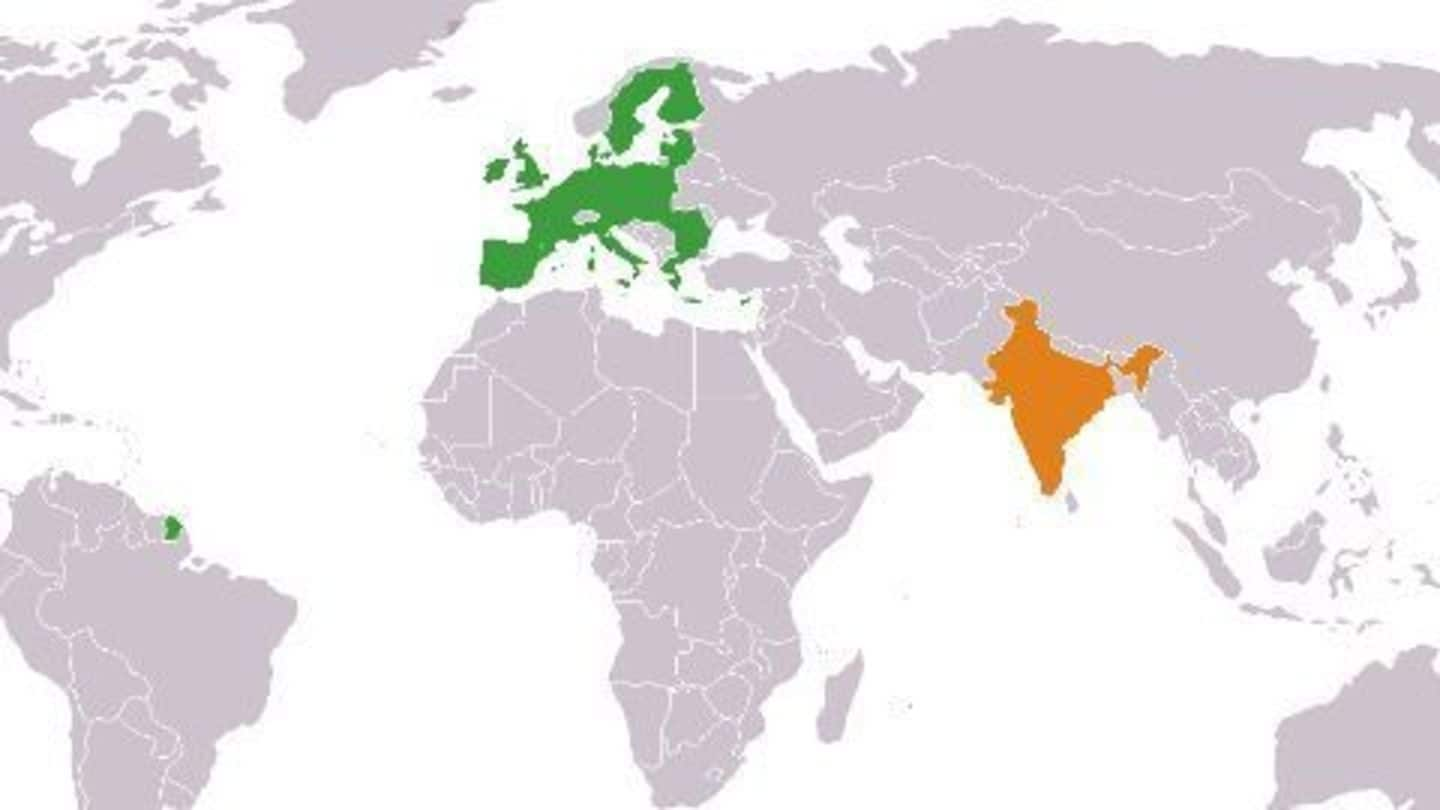
India-EU summit concludes with improved bilateral relations
What's the story
The India-EU summit concluded with leaders discussing ways to improve co-operation in various fields including foreign policy, counter terrorism and space.
While both the parties failed to set a date for the next round of negotiations, Tomasz Kozlowski, EU Ambassador to India, said that both sides agreed to improve flexibility in trade regimes.
Experts say the discussions brought India-EU strategic partnership back on track.
Introduction
India-EU relations: An overview
India-EU relations date to the early 1960s, with India being amongst the first countries to establish diplomatic relations with the European Economic Community.
A cooperation agreement signed in 1994 took the bilateral relationship beyond trade and economic cooperation.
Indian and the EU began holding bilateral summits, known as the India-EU summits in June 2000.
By 2004, both sides upgraded relations to a 'strategic partnership'.
India
India's role in Europe
Europe is the single largest destination for Indian students seeking to pursue under-graduate and post-graduate education overseas.
Europe is popular with Indian tourists and also with the Indian film industry and their outdoor shoots.
Indian cinema is also a regular feature in European film festivals.
Several Indian firms run coal and steel plants in European countries, a valuable source of income in these countries.
EU
How does EU affect India's growth?
Iconic firms and luxury brands from EU, including Airbus, Dassault, Bic, Michelin, Saint-Gobain, Sodexo, Hermes, Louis Vuitton, L'Oreal and Chanel enjoy universal recognition in India.
Bangalore, Hyderabad, Chennai and Pune host a steadily growing base of European economic migrants who have set-up SMEs in engineering, biotechnology and ICT sectors.
Several EU start-up venture use India for back-office processes to maximize seed money.
BTIA
The BTIA: Scope to improve trade ties?
In 2005, India and the EU began negotiations to improve trade relations and remove barriers to free trade.
By 2007, negotiations began on the Broadbased Trade and Investment Agreement, a treaty aimed at taking India-EU trade ties further.
However, negotiations have significantly slowed down as both countries were unable to reach a consensus on lowering trade tariffs on both sides to boost trade.
Trade
India-EU bilateral trade: An overview
In 2015, the EU was India's largest regional trade partner, accounting for 20% of total trade.
India was the EU's 9th largest trade partner in the same time frame.
Since 2012, there has been decreasing investments to India from the EU.
EU FDI in India rose to a peak on €13.8 billion in 2012, only to fall sharply to €4.8 billion by 2015.
Why?
Why this drop in trade?
Over the last few years the EU economy has been stagnating, while the Indian economy continues to achieve unprecedented growth rates.
EU leaders accuse India of having constricting trade regimes which stifle business opportunities in the country.
They also allege that political and personal freedoms in India are not up to international standards.
Indian tariffs on imported goods are also alleged to stifle growth.
Quote
EU: Need more commitment to improve ties
"We really needed a strong political push and an expression of strong political commitment from both sides to define the main directions of our relations" - Tomasz Kozlowski, EU Ambassador to India.
Agreements
What areas of co-operation were agreed upon?
The two sides adopted the joint declarations on the India-EU Water Partnership and a Clean Energy and Climate Partnership.
The two sides agreed to cooperate in countering violent extremism, disrupt recruitment of terrorists and prevent the free passage of foreign fighters.
The Common Agenda on Migration and Mobility (CAMM), was also adopted, with an aim to control and organize global migration.